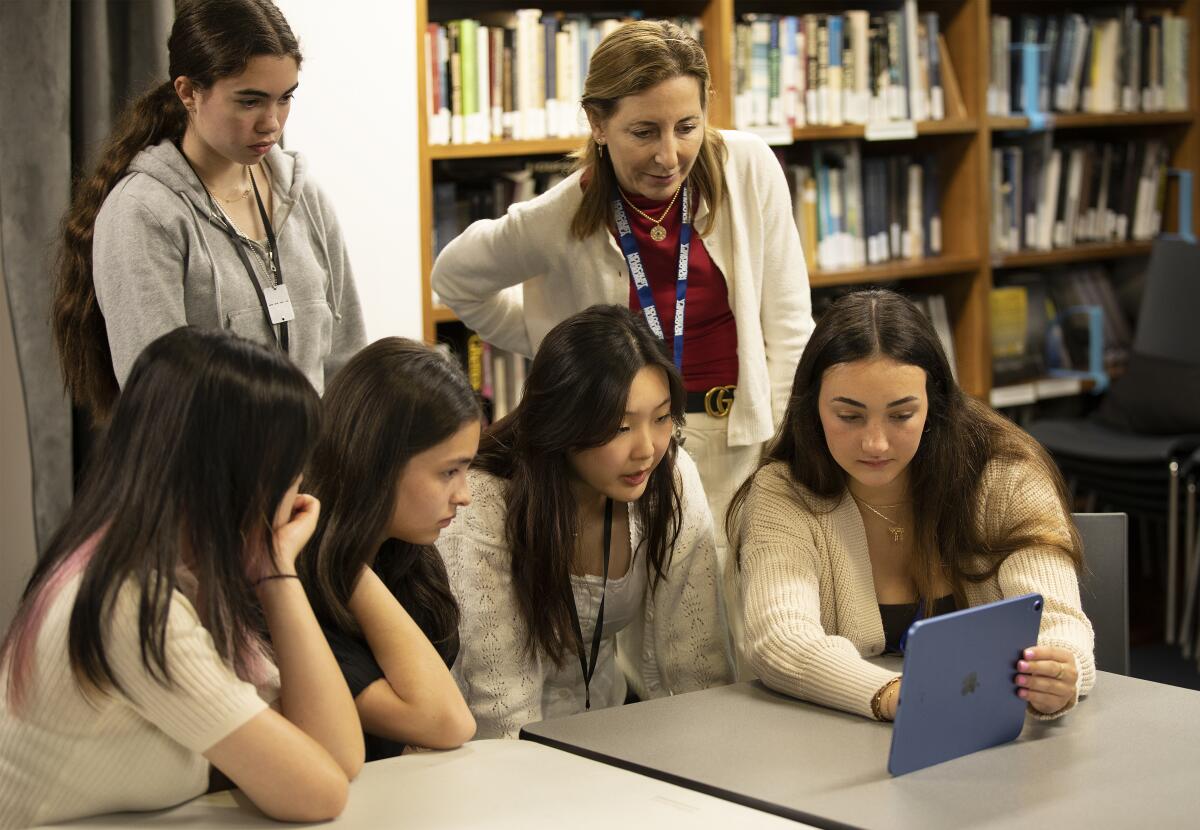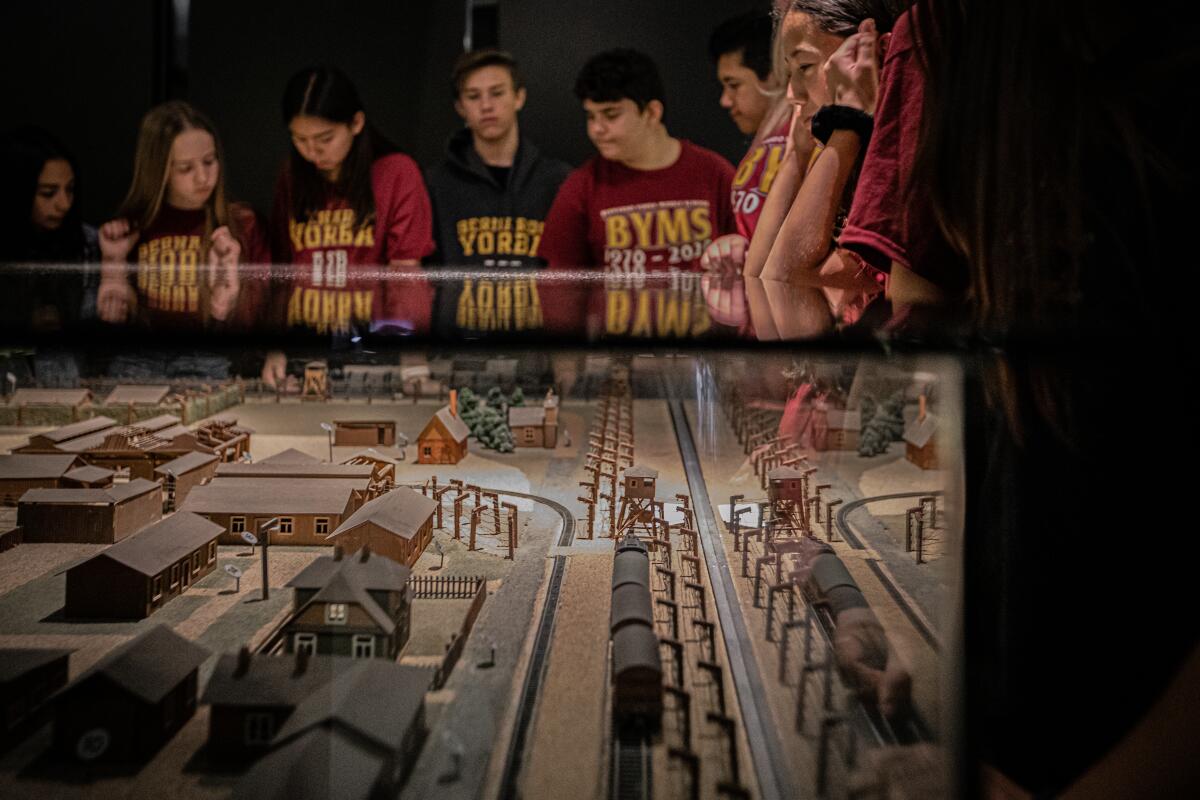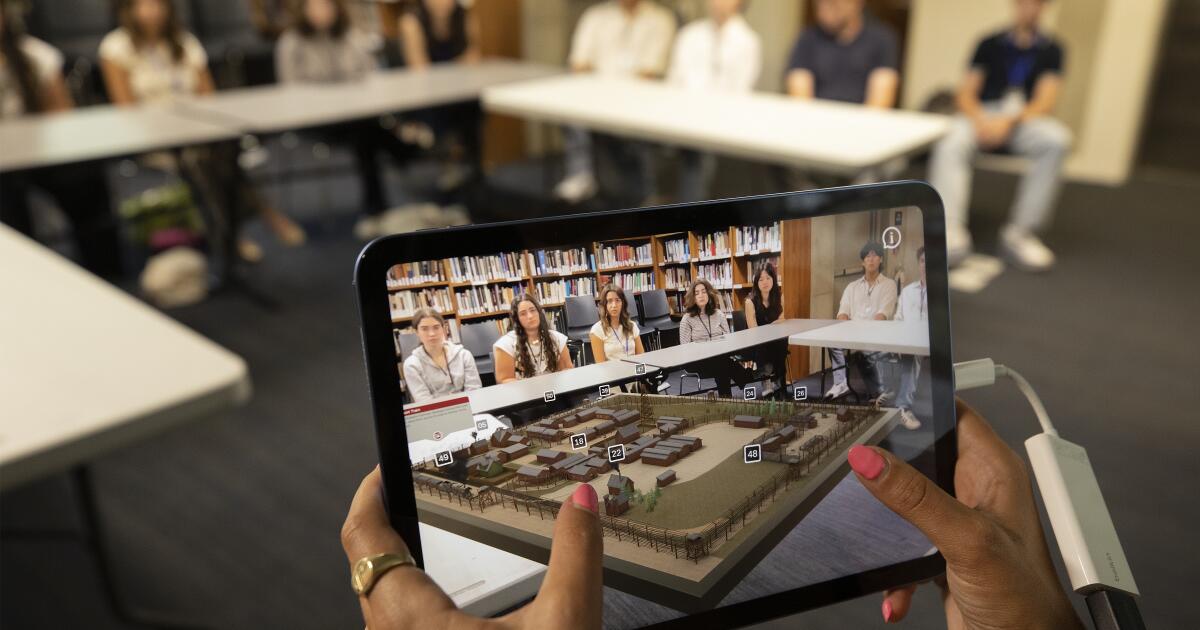Holocaust survivor Harry David has dedicated his life to uncovering the story of his parents that he never knew.
Born in Nazi-occupied Holland in 1942, Davids was just a toddler when her parents were deported and murdered at the Sobibor extermination camp in Poland. Raised by relatives in South Africa after the war, she spent decades trying to learn the details of her family’s history, a task made harder when the perpetrators dismantled Sobibor after the war and planted trees to hide the site where at least 170,000 people were systematically murdered.
“The tenth and final stage of genocide is denial,” Davids says. “The Nazis did a good job of covering up the evidence about Sobibor and several other camps.”
Now, a groundbreaking collaboration between Hollywood and the Los Angeles Holocaust Museum is bringing this lost history to life with 21st century technology. The Los Angeles Holocaust Museum, the oldest Holocaust museum in the United States, has partnered with Magnopus, a technology studio led by visual effects artists Craig Baron and Ben Grossman, who won Academy Awards for their work on 2008’s The Curious Case of Benjamin Button and 2011’s Hugo, respectively, to create a new educational app that uses augmented reality to bring Sobibor to life in the virtual world.
Available as a free download from the Apple App Store, the Sobibor AR exhibit allows users to interact with a 3D model of Sobibor while actor Ben Feldman serves as a holographic guide, providing historical context and encouraging deeper exploration of the camp’s layout and daily life. The app revolves around the story of Tomas Blatt, a Polish survivor who escaped Sobibor during the famous 1943 uprising and created a detailed map from memory, including key locations such as barracks, guard towers, gas chambers and mass graves.
The museum, founded in 1961 by a group of Holocaust survivors, features a life-size model of Sobibor based on Blatt’s map, but Davids, who frequently speaks to young people about what happened to his family and millions of Holocaust victims, said the app makes for a more immersive experience.
“The glass covering the original model has been removed, making the visitor feel like they are part of the exhibition,” he says.

Los Angeles Holocaust Museum CEO Beth Keene (back row, right) watches summer interns Megan Tian (left), Leila Negrin, Samantha Shapiro, Kate Chang and Lila Kessler use the new Sobibor app.
(Al-Seib / Los Angeles Museum of the Holocaust)
For the museum, which already incorporates virtual reality technology into its exhibits, the app is a new way to engage younger generations with the history of the Holocaust. The museum has also created a guidebook for educators, and since the app’s soft launch last year, it has trained 123 teachers on how to use it, and says it has been used by more than 150,000 students.
“We know we’re in a situation where young people come to the museum and think, ‘Oh, this is old history,'” says Beth Keene, chief executive officer of the Holocaust Museum in Los Angeles. “We need to grab their attention the minute they get off the bus and help them understand why they’re here. We need to make this history accessible and familiar to them and teach it at a level they can understand.”
In 2019, the museum partnered with “cross-experience” company Magnopus to develop an app that uses artifacts, photographs, and a physical model of the Sobibor camp from its collection.
“Most of the people at Magnopus work in the film industry in some way, telling fantasy stories,” says Baron, the company’s creative director, who has worked on VFX on films like Raiders of the Lost Ark, Batman Returns and Titanic. “This was an opportunity to tell a real, true story. Thomas Bratt’s map is essentially a witness to his experience, and we can add value to this and extend it beyond the walls of the physical museum.”
It was crucial to all involved that the app be firmly based in first-hand historical documents and artifacts. “Our museum ethos believes that primary sources and survivor testimonies are essential to Holocaust education and cultivating an empathetic response to history,” says Jordana Gessler, Chief Impact Officer at the Los Angeles Holocaust Museum. “We felt that the Sobibor model was the perfect subject to launch this effort because it embodies this history and many of our museum’s beliefs.”
For the project, the Magnopus team reviewed primary sources, including home videotapes from Blatt’s visits to the Sobibor site, his testimony at the Nuremberg trials, and photo albums left by the camp’s commandant. Blatt himself died in 2015 at age 88, but his daughter helped provide information for the project.
“It all starts with the script, because, you know, this is Hollywood. We communicate with the museum a lot to make sure it’s accurate,” says Vince Beggs, museum experience specialist at Magnopus, which has worked on hundreds of museum exhibits and programs. “If you give it the wrong information, it will fail. We spent a lot of time asking, ‘What is the story?’ There are a lot of people who have memories of being at Sobibor, and we’ve seen those memories published, but this is specifically from Thomas’ perspective.”

A young visitor to the Los Angeles Holocaust Museum examines a model of the Sobibor concentration camp.
(Tamara Lee / Los Angeles Museum of the Holocaust)
Magnopus is packed with impressive virtual reality and AR tools, including those developed in collaboration with Epic Games, but the goal was to treat the app as an educational tool, not a technological novelty. “We wanted to avoid anything that felt like a computer game,” says Barron. “We wanted to treat the subject matter with the utmost respect and not make it theatrical. The fact that these prisoners escape is a very compelling story, so we needed to portray it as accurately as possible.”
While the Los Angeles Holocaust Museum is currently closed for an expansion that will double its footprint in Pan Pacific Park, the app provides a way for the museum to continue its mission at a time of rising anti-Semitism amid the ongoing conflict over Gaza. According to an audit conducted by the Anti-Defamation League, anti-Semitic incidents in K-12 schools increased 135% in 2023 compared to the previous year. “When you look at the situation we’re facing, the statistics are frightening,” Keane said.
With this in mind, Magnopus is exploring other ways to work with museums to develop cutting-edge educational tools, including an app that allows users to enter the pages of Nazi children’s propaganda books and learn how German youth were indoctrinated with anti-Semitism. “It’s horrible to reach out to corrupt children, but rather than ignoring it, we must dig deeper and share it with others.”
Davids, who has spoken to thousands of young people about the Holocaust over the years, is heartened by the fact that future generations will have new ways to engage with this tragic chapter in history.
“For people like me, it’s so encouraging to see new technology that facilitates this education,” said David, who has a photo of his mother on the app. “We don’t just learn about history, we learn from history. Someone has to speak for us when people like me are gone. Who will speak for us? What will be left, what will be preserved?”

